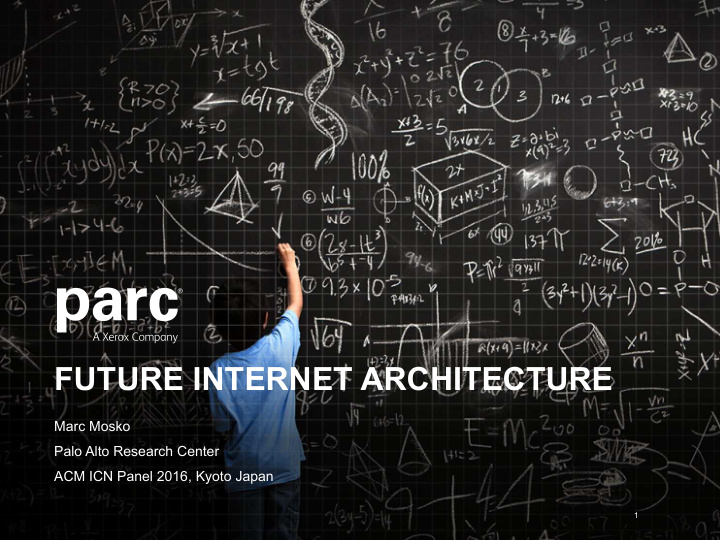



FUTURE INTERNET ARCHITECTURE Marc Mosko Palo Alto Research Center ACM ICN Panel 2016, Kyoto Japan 1
FUTURE INTERNET ARCHITECTURE Protocol Feature 2
FUTURE INTERNET ARCHITECTURE* Protocol Feature IPv6 Large address space, auto-configuration, multicast, anycast, fast forwarding/routing, dynamic path MTU, mandatory security support (encryption and authentication). QUIC Multiplexed connectionless stream transport with TLS 1.3, multipath, mobility, efficiency TLS 1.3 Secure PKI-based key exchange and encryption for QUIC HTTP/2 Request/response protocol on names with push LISP Map & encap Endpoint IDs (e.g. public key, name prefix, GPS coordinate, etc.) to routing locators (RLOCs, e.g. IPv6), supports mobility, multi-homing, make-before-break. OSPFv3/ Routing protocols to distribute RLOCs BGPv4 ISAKMP / Secure key exchange between RLOCs IKEv2 DRM End-to-end encryption and access control 3 * Nilo Mitra also recently presented a list like this
FUNDAMENTAL QUESTIONS • Why and how is ICN better than today’s Internet? – Justify the forklift upgrade to an ICN layer 3. – Quantify why it cannot be done over today’s Internet. • Need to nail down the Layer 3 protocol Data plane Internet scale routing Management Discovery Hardware Diagnostics APIs/Libraries Transport protocols Privacy Off-path replicas Migration plan • When will it be ready? – Compare to the Internet then, not yesterday’s or today’s. – If ICN needs new hardware, how feasible is it? When could it be ready? How much better would IP HW be with same tech? 4
Recommend
More recommend